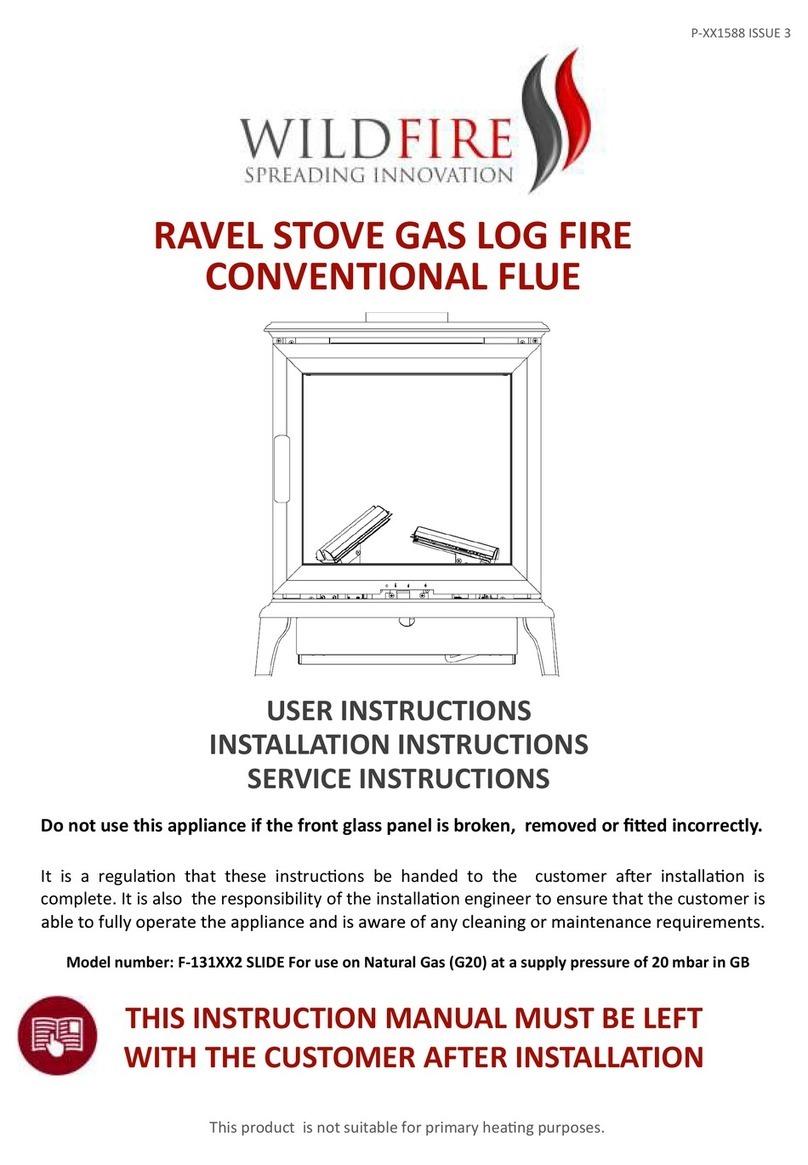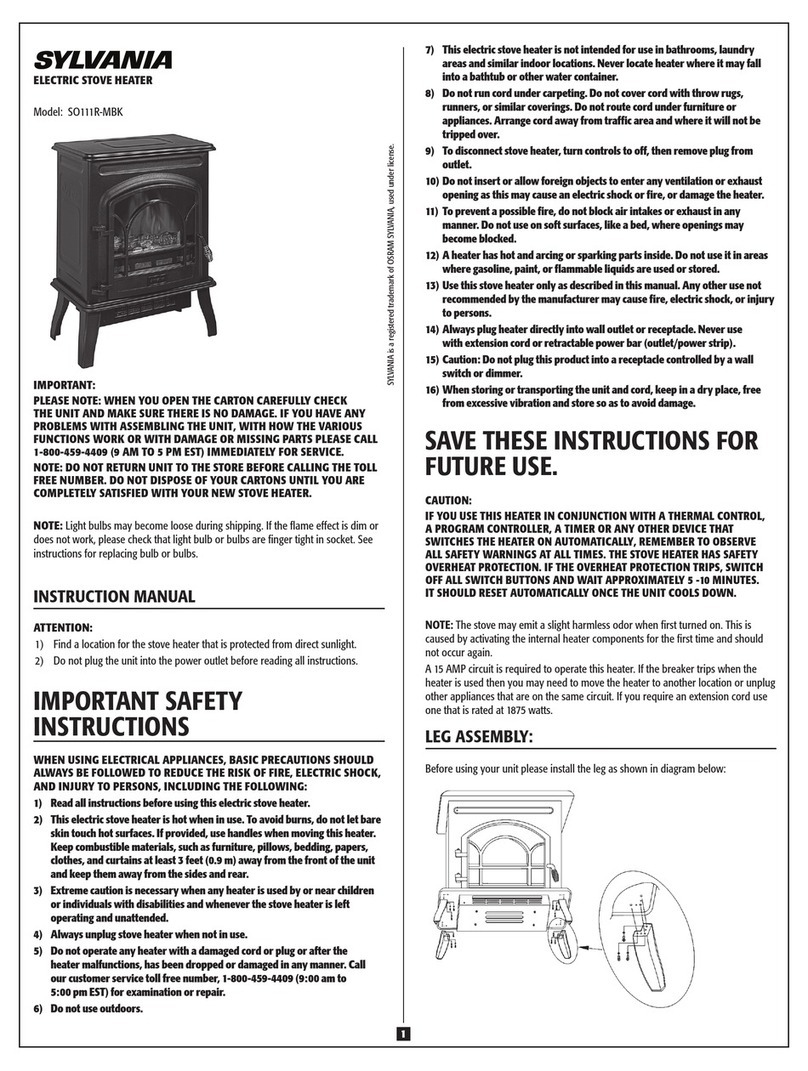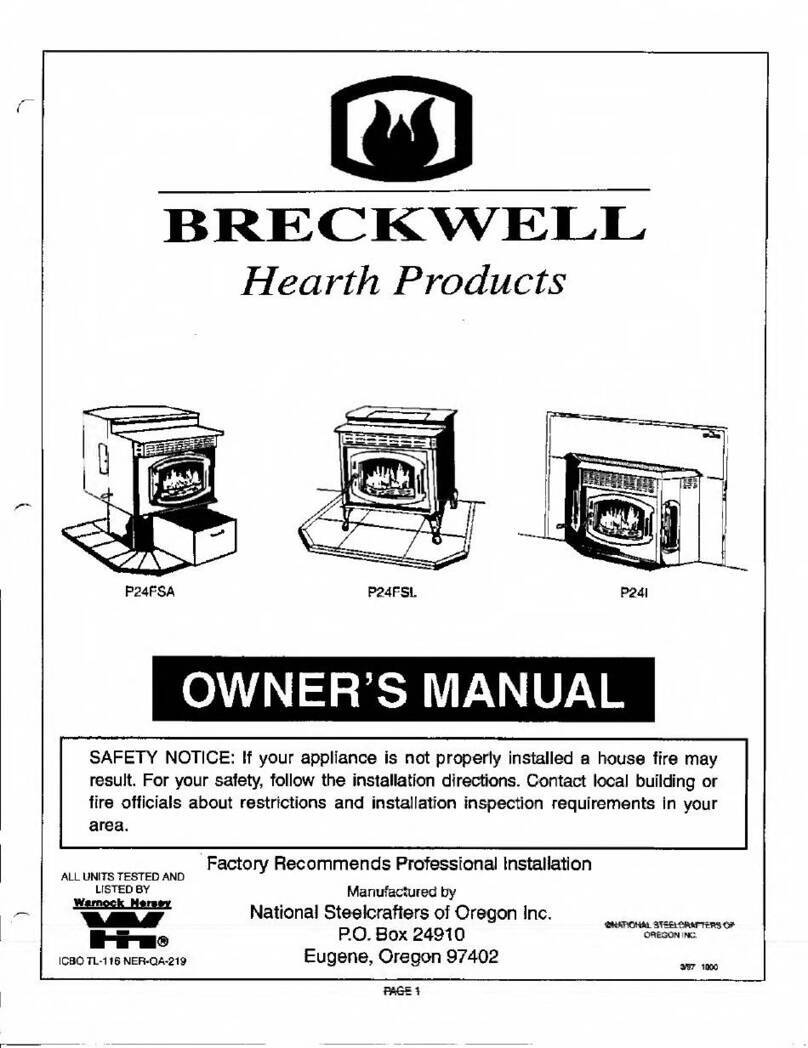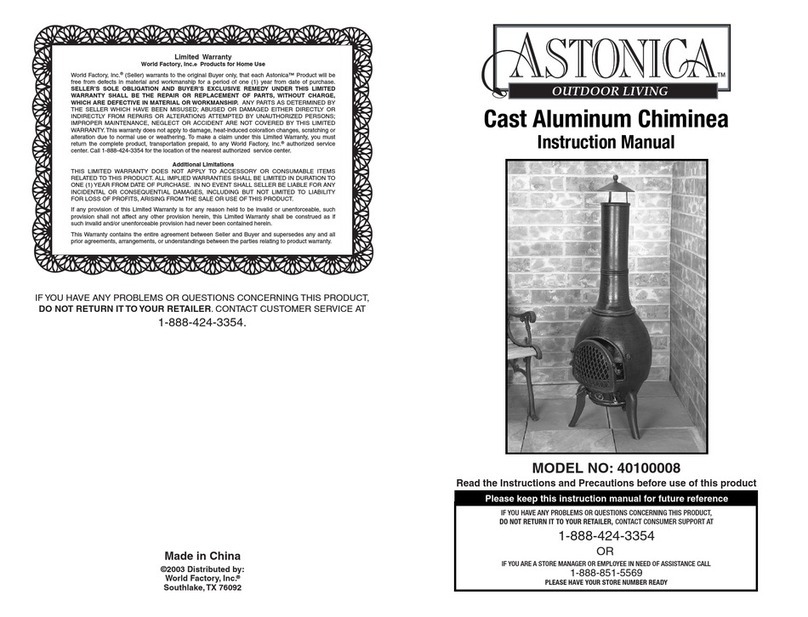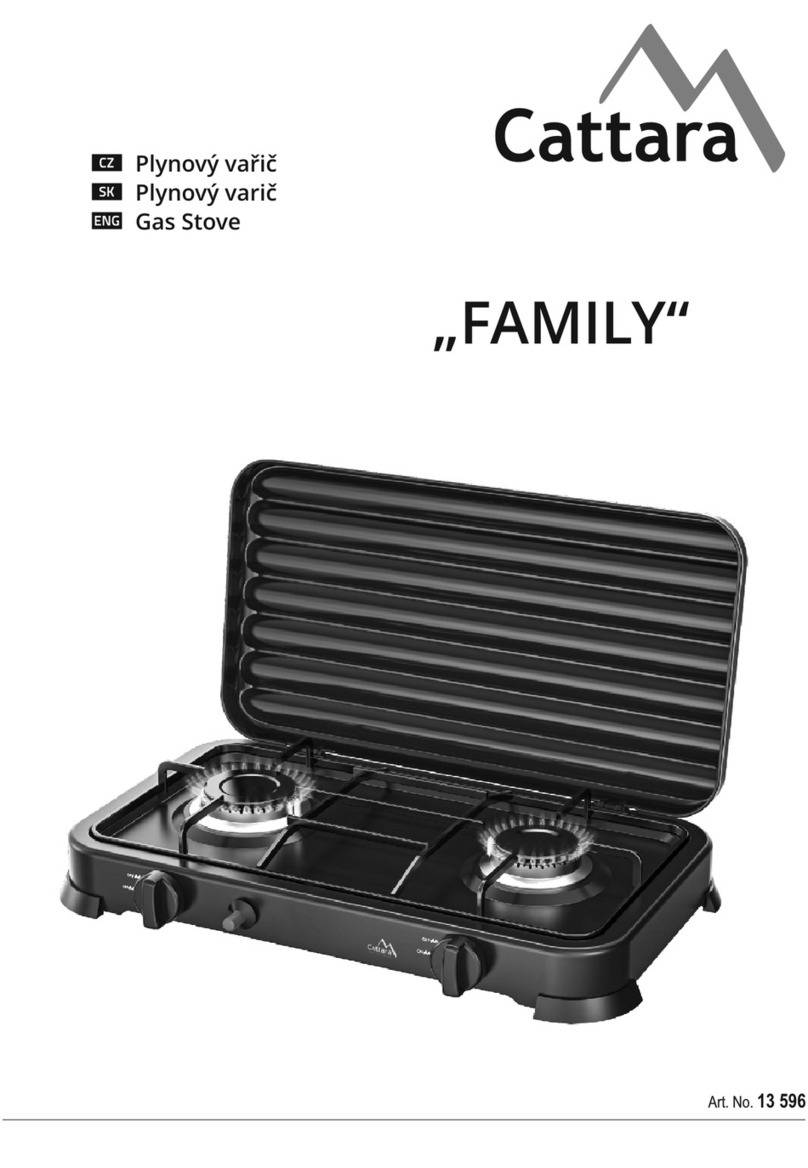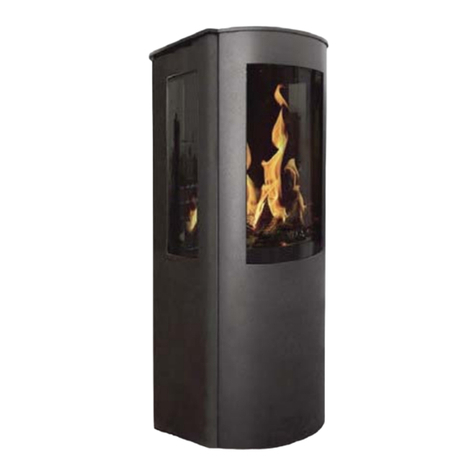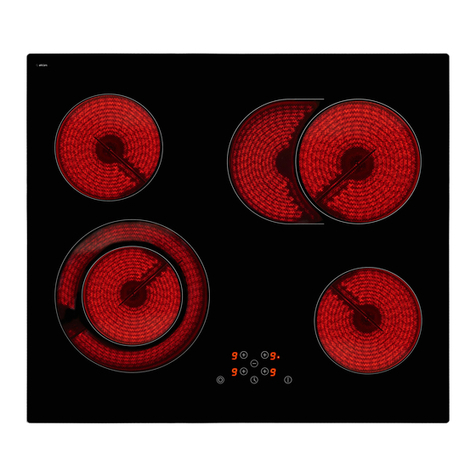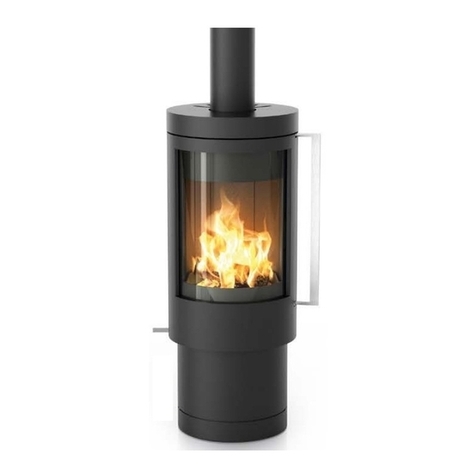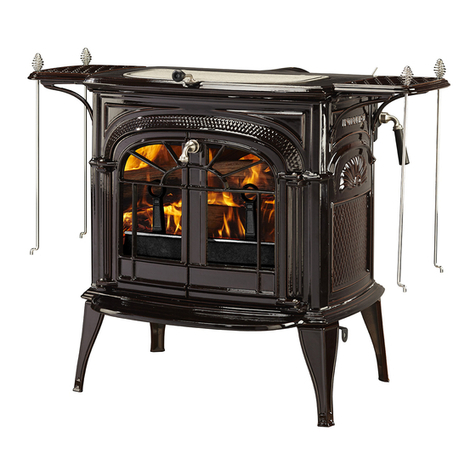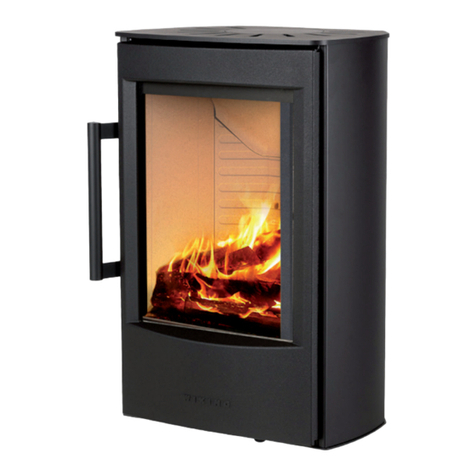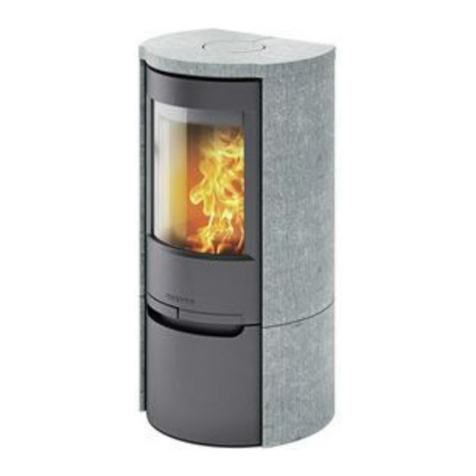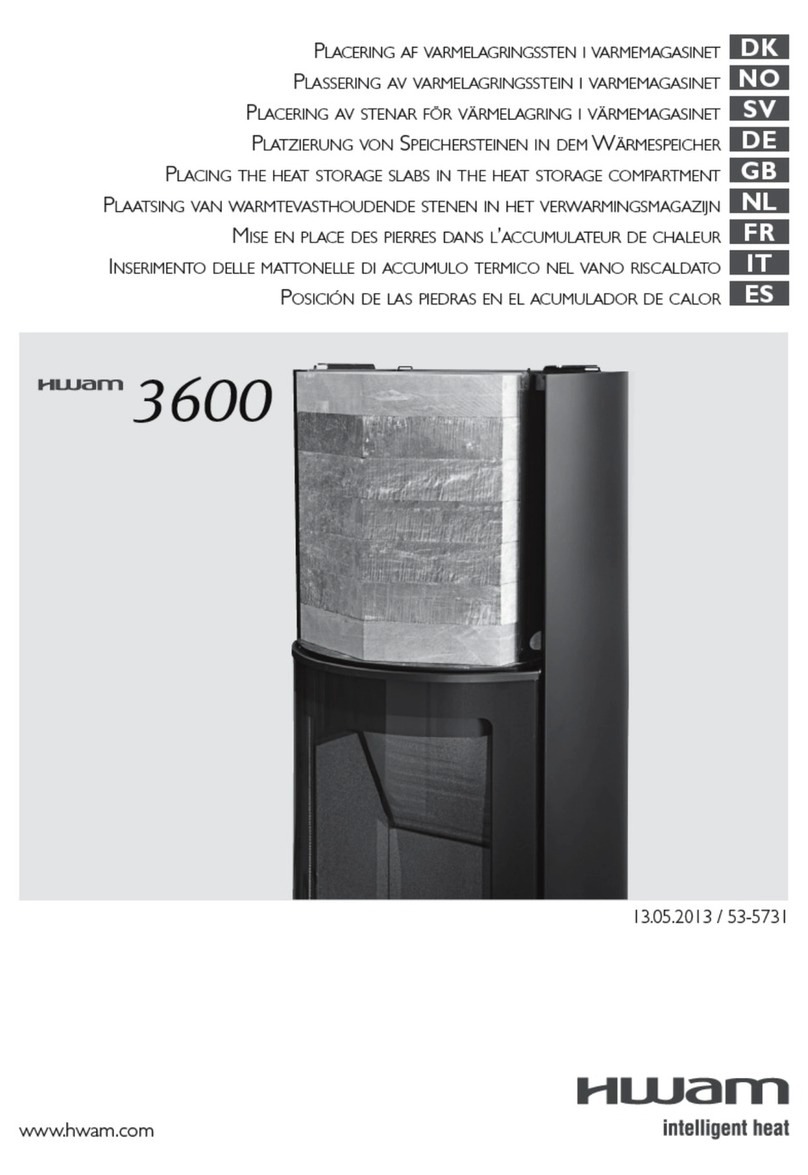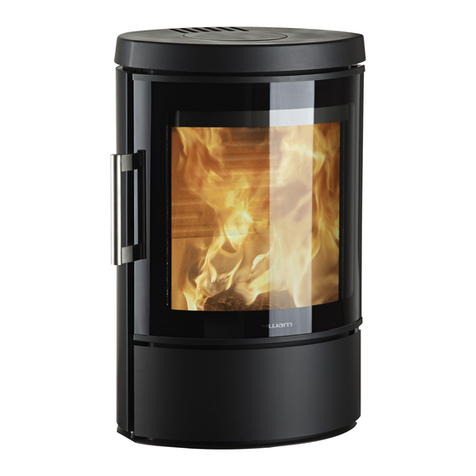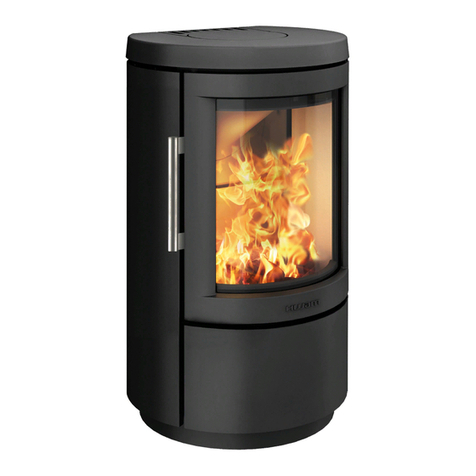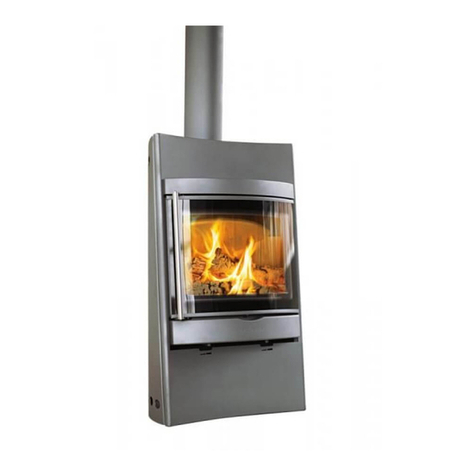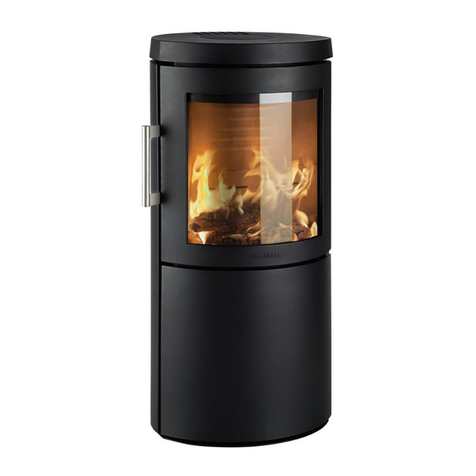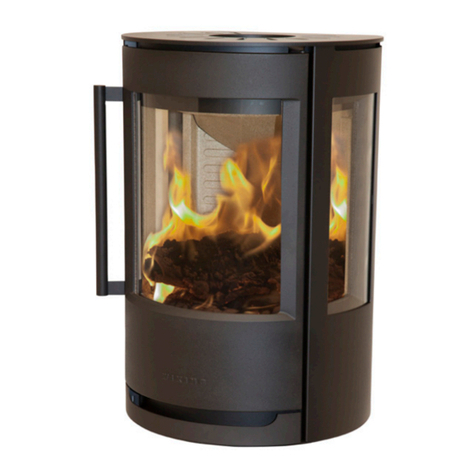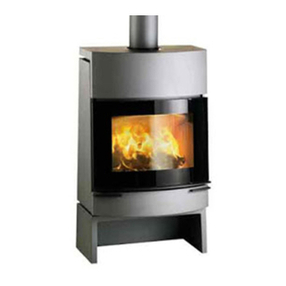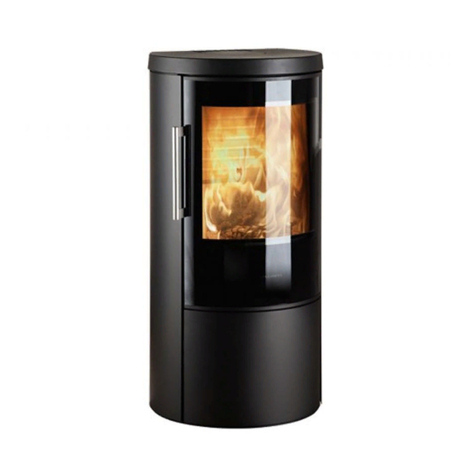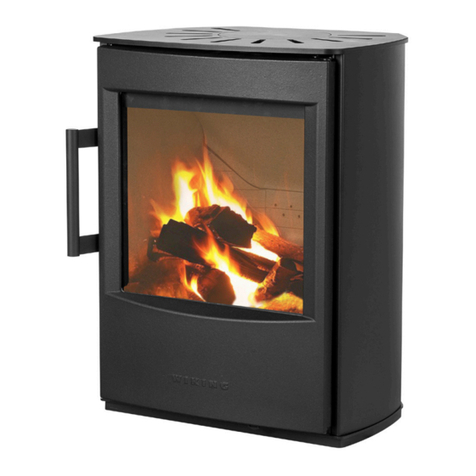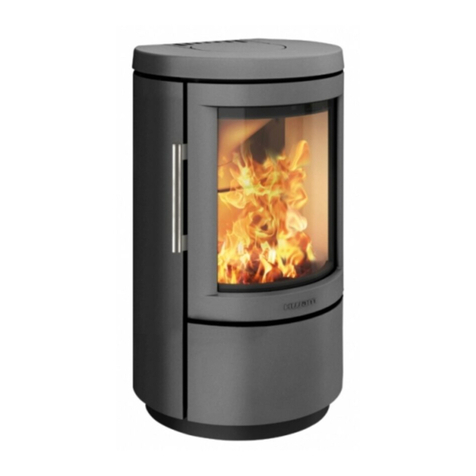
3
HWAM Vivaldi
IMPORTANT SAFETY NOTICE
This appliance has a ceramic Fire-bed arrangement;
this contains Refractory Ceramic Fibres, which are
man-made vitreous silicate fibres. Excessive expo-
sure to these materials can cause irritation to eyes,
skin and respiratory organs. Hence we recommend
that when handling these materials the release of
dust should be kept to a minimum. During installa-
tion and servicing we recommend that a HEPA fil-
tered vacuum be used to remove any dust and soot
in and around the fire. If any of the ceramic fire-bed
components need to be replaced we recommend
that the removed parts be sealed in a heavy-duty
polythene bag, and be labelled as RCF waste. RCF is
not“Hazardous waste”and can be disposed of at a
licensed tipping site for the disposal of industrial
waste.
The appliance incorporates an Oxygen Depletion
Sensor (ODS) Monitoring system.This is located on
the front of the burner, and must not be adjusted
by the installer. This ODS system must not be put
out of operation, and if any parts require changing,
only original manufacturer parts shall be used.
This appliance is designed to be used either Natu-
ral or LPG gas however, each individual appliance
is only capable of running off the type of gas speci-
fied at the time of purchase. It is important to note
that once a type of gas has been specified the stove
cannot run off any other type.The type of gas that
your stove is capable of burning is stated on the
data information panel.
This appliance has been designed, tested and ap-
proved to meet standards in place for product use,
performance and safety. Installation of your Stove
must comply with current building regulations. It is
therefore recommend that a CORGI engineer be
employed for this task. Taking particular notice of
“thermal inversion”The engineer will provide you
with information about the safety limits of the in-
stallation and should fix a notice plate in a place
where it can be readily seen.
This appliance is designed as an efficient heating
device and consequently all body parts become
very hot in use. Except for the control knob and con-
trol access door,which are designed to stay cool,all
other parts are working surfaces and should not be
touched.
The glass and frame on this appliance acts as a fire-
guard conforming to BS: 1945 – 1971 and satisfies
the Heating Appliance (Fireguards) regulations
1991. No part of the window or frame should be
permanently removed. It does not give full pro-
tection for young children or the infirm, extra pro-
tection should be considered for these conditions
conforming to BS 6539 or BS 6778.
Bearing in mind that the heat given off by this ap-
pliance may affect articles placed close to it, cur-
tains should not be placed within 30cm.
The appliance is not designed as a dryer. It is not
therefore recommended that the appliance be used
in such a manner. Do not place any articles within
30cm of this appliance as this may result in damage
to the articles.
The installation must be carried out in accordance
with the following regulations:
The Building Regulations issued by the Department
of the Environment, the Building Standards (Scot-
land) (Consolidation) Regulations issued by the
Scottish Development Department.
GENERALINFORMATION

